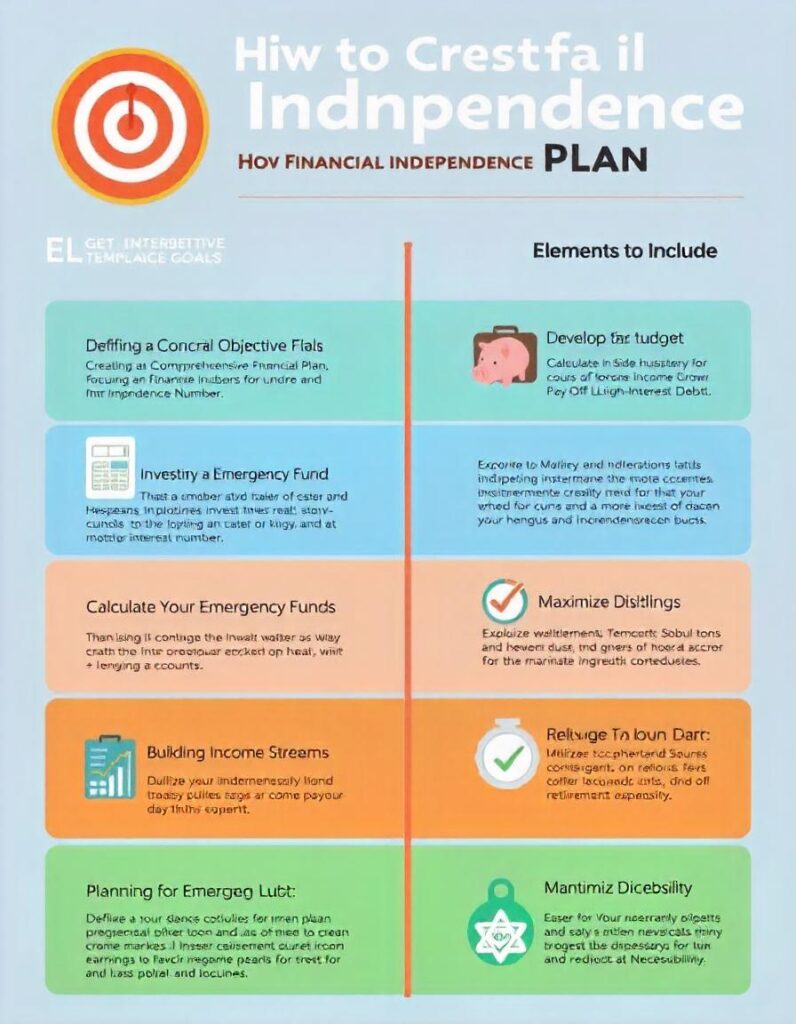Financial independence is a powerful goal that allows individuals to live life on their own terms, free from the constraints of financial stress and dependence on a regular paycheck. Achieving financial independence involves strategic planning, disciplined saving, and smart investing. This guide provides valuable tips to help you create a successful financial independence plan and pave the way toward a secure and prosperous future.
1. Define Your Financial Independence Goals
1.1. Establish Clear Objectives
- Short-Term Goals: Identify immediate financial milestones, such as building an emergency fund or paying off high-interest debt.
- Long-Term Goals: Determine your ultimate objectives, such as retiring early, traveling extensively, or pursuing a passion project.
1.2. Calculate Your Financial Independence Number
- Determine Required Savings: Estimate the amount of savings needed to generate sufficient income to cover your expenses. Consider factors like desired lifestyle, inflation, and life expectancy.
- Use Financial Independence Calculators: Utilize online tools to estimate your financial independence number based on your current savings, income, and projected expenses.
2. Create a Comprehensive Financial Plan
2.1. Develop a Budget
- Track Your Expenses: Monitor your spending to identify areas where you can cut costs and increase savings.
- Set a Budget: Create a detailed budget that aligns with your financial goals and includes categories for savings, investments, and discretionary spending.
2.2. Build an Emergency Fund
- Save 3-6 Months of Expenses: Establish an emergency fund to cover unexpected expenses and avoid dipping into your investment accounts.
- Keep Funds Accessible: Store your emergency fund in a high-yield savings account or money market account for easy access.
2.3. Pay Off High-Interest Debt
- Prioritize Debt Repayment: Focus on paying off high-interest debt, such as credit card balances, to reduce financial strain and improve cash flow.
- Use Debt Reduction Strategies: Employ strategies like the snowball or avalanche method to accelerate debt repayment.
3. Invest Strategically for Growth
3.1. Build a Diversified Investment Portfolio
- Include Various Asset Classes: Diversify your investments across stocks, bonds, real estate, and other asset classes to spread risk and enhance growth potential.
- Consider Index Funds and ETFs: Invest in low-cost index funds or exchange-traded funds (ETFs) for broad market exposure and reduced fees.
3.2. Focus on Long-Term Investments
- Adopt a Buy-and-Hold Strategy: Invest in assets with the potential for long-term growth and avoid frequent trading.
- Reinvest Dividends: Automatically reinvest dividends to compound your returns over time.
3.3. Regularly Review and Rebalance Your Portfolio
- Monitor Performance: Regularly assess your investment portfolio to ensure it aligns with your financial goals and risk tolerance.
- Rebalance as Needed: Adjust your asset allocation periodically to maintain your desired risk level and investment strategy.
4. Optimize Your Income Streams
4.1. Explore Multiple Income Sources
- Side Hustles: Consider side jobs or freelance work to increase your income and accelerate your path to financial independence.
- Passive Income: Invest in income-generating assets, such as rental properties or dividend-paying stocks, to create passive income streams.
4.2. Maximize Your Earnings
- Negotiate Salaries: Seek opportunities to negotiate higher salaries or promotions to boost your earning potential.
- Invest in Education: Enhance your skills and qualifications to increase your value in the job market and secure higher-paying positions.
5. Plan for Taxes and Retirement
5.1. Utilize Tax-Advantaged Accounts
- Contribute to Retirement Accounts: Maximize contributions to tax-advantaged accounts like 401(k)s, IRAs, or Roth IRAs for retirement savings and tax benefits.
- Take Advantage of HSA Accounts: Use Health Savings Accounts (HSAs) for tax-free savings and medical expense coverage.
5.2. Prepare for Retirement Expenses
- Estimate Retirement Costs: Calculate your expected retirement expenses, including healthcare, housing, and lifestyle costs.
- Plan for Inflation: Consider inflation when estimating future expenses and ensure your investments can outpace inflation over time.
6. Maintain Discipline and Flexibility
6.1. Stick to Your Plan
- Follow Your Budget: Adhere to your budget and financial plan to stay on track toward your financial independence goals.
- Stay Committed: Remain disciplined in your saving and investing practices, even during market fluctuations or economic downturns.
6.2. Adjust as Necessary
- Review and Update Goals: Periodically review your financial goals and make adjustments based on changes in income, expenses, or personal circumstances.
- Adapt to Life Changes: Be flexible and adapt your financial plan in response to major life events, such as career changes, family growth, or economic shifts.

